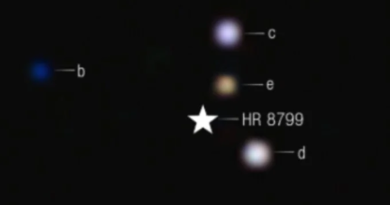A Planet-Forming Disk Has Heen Discovered Outside The Milky Way.
Astronomers have discovered for the first time a disk of gas and dust orbiting a young star outside the Milky Way. A star called HH 1177 is located in the Large Magellanic Cloud galaxy, which is a satellite of our galaxy and is located at a distance of 160 thousand light years from us.
The discovery was made by the ALMA array in Chile and confirmed by the MUSE spectrometer on the VLT telescope of the Southern European Observatory (both complexes are located in the Chilean Atacama Desert). This was the first time that a phenomenon previously encountered by astronomers only in our galaxy was observed outside the Milky Way. Planets are usually formed from such gaseous disks around young stars, and occasionally the disk material feeds the star itself, which was also revealed in the case of the discovery.
Closer to the center, the disk rotates faster, and this difference in speed is the very fact that indicates to astronomers the presence of an accretion disk. The speed can be determined by measuring the frequency of radiation from the inner and outer regions of the gas disk, for which the ALMA array was 100 percent suitable. And scientists found this information in the array data. A young star in another galaxy actually had an accreting disk of gas that would not only form planets there in the future, but it also fed the star, increasing its size.
The same accretion disk surrounded our Sun approximately 4.5 billion years ago. Subsequently, it was from this material that all the planets of the solar system, as well as other known objects, emerged.




